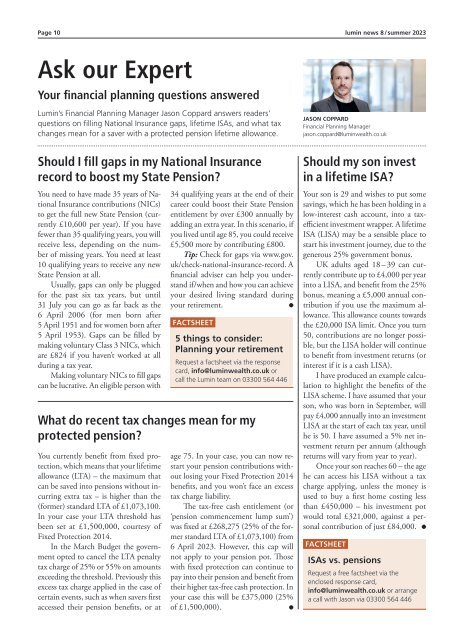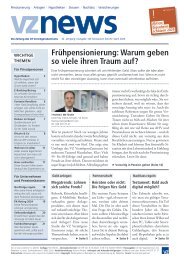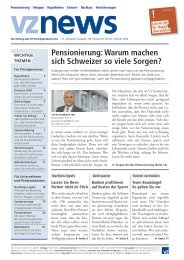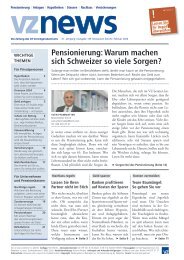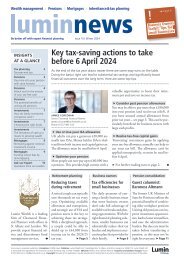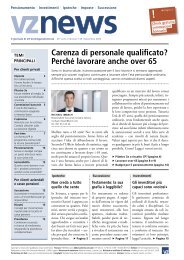lumin news Issue 8 / Summer 2023
You also want an ePaper? Increase the reach of your titles
YUMPU automatically turns print PDFs into web optimized ePapers that Google loves.
Page 10 <strong>lumin</strong> <strong>news</strong> 8 / summer <strong>2023</strong><br />
Ask our Expert<br />
Your financial planning questions answered<br />
Lumin’s Financial Planning Manager Jason Coppard answers readers’<br />
questions on filling National Insurance gaps, lifetime ISAs, and what tax<br />
changes mean for a saver with a protected pension lifetime allowance.<br />
JASON COPPARD<br />
Financial Planning Manager<br />
jason.coppard@<strong>lumin</strong>wealth.co.uk<br />
Should I fill gaps in my National Insurance<br />
record to boost my State Pension?<br />
You need to have made 35 years of National<br />
Insurance contributions (NICs)<br />
to get the full new State Pension (currently<br />
£10,600 per year). If you have<br />
fewer than 35 qualifying years, you will<br />
receive less, depending on the number<br />
of missing years. You need at least<br />
10 qualifying years to receive any new<br />
State Pension at all.<br />
Usually, gaps can only be plugged<br />
for the past six tax years, but until<br />
31 July you can go as far back as the<br />
6 April 2006 (for men born after<br />
5 April 1951 and for women born after<br />
5 April 1953). Gaps can be filled by<br />
making voluntary Class 3 NICs, which<br />
are £824 if you haven’t worked at all<br />
during a tax year.<br />
Making voluntary NICs to fill gaps<br />
can be lucrative. An eligible person with<br />
You currently benefit from fixed protection,<br />
which means that your lifetime<br />
allowance (LTA) – the maximum that<br />
can be saved into pensions without incurring<br />
extra tax – is higher than the<br />
(former) standard LTA of £1,073,100.<br />
In your case your LTA threshold has<br />
been set at £1,500,000, courtesy of<br />
Fixed Protection 2014.<br />
In the March Budget the government<br />
opted to cancel the LTA penalty<br />
tax charge of 25% or 55% on amounts<br />
exceeding the threshold. Previously this<br />
excess tax charge applied in the case of<br />
certain events, such as when savers first<br />
accessed their pension benefits, or at<br />
34 qualifying years at the end of their<br />
career could boost their State Pension<br />
entitlement by over £300 annually by<br />
adding an extra year. In this scenario, if<br />
you lived until age 85, you could receive<br />
£5,500 more by contributing £800.<br />
Tip: Check for gaps via www.gov.<br />
uk/check-national-insurance-record. A<br />
financial adviser can help you understand<br />
if /when and how you can achieve<br />
your desired living standard during<br />
your retirement.<br />
FACTSHEET<br />
5 things to consider:<br />
Planning your retirement<br />
Request a factsheet via the response<br />
card, info@<strong>lumin</strong>wealth.co.uk or<br />
call the Lumin team on 03300 564 446<br />
What do recent tax changes mean for my<br />
protected pension?<br />
age 75. In your case, you can now restart<br />
your pension contributions without<br />
losing your Fixed Protection 2014<br />
benefits, and you won’t face an excess<br />
tax charge liability.<br />
The tax-free cash entitlement (or<br />
‘pension commencement lump sum’)<br />
was fixed at £268,275 (25% of the former<br />
standard LTA of £1,073,100) from<br />
6 April <strong>2023</strong>. However, this cap will<br />
not apply to your pension pot. Those<br />
with fixed protection can continue to<br />
pay into their pension and benefit from<br />
their higher tax-free cash protection. In<br />
your case this will be £375,000 (25%<br />
of £1,500,000).<br />
Should my son invest<br />
in a lifetime ISA?<br />
Your son is 29 and wishes to put some<br />
savings, which he has been holding in a<br />
low-interest cash account, into a taxefficient<br />
investment wrapper. A lifetime<br />
ISA (LISA) may be a sensible place to<br />
start his investment journey, due to the<br />
generous 25% government bonus.<br />
UK adults aged 18 – 39 can currently<br />
contribute up to £4,000 per year<br />
into a LISA, and benefit from the 25%<br />
bonus, meaning a £5,000 annual contribution<br />
if you use the maximum allowance.<br />
This allowance counts towards<br />
the £20,000 ISA limit. Once you turn<br />
50, contributions are no longer possible,<br />
but the LISA holder will continue<br />
to benefit from investment returns (or<br />
interest if it is a cash LISA).<br />
I have produced an example calculation<br />
to highlight the benefits of the<br />
LISA scheme. I have assumed that your<br />
son, who was born in September, will<br />
pay £4,000 annually into an investment<br />
LISA at the start of each tax year, until<br />
he is 50. I have assumed a 5% net investment<br />
return per annum (although<br />
returns will vary from year to year).<br />
Once your son reaches 60 – the age<br />
he can access his LISA without a tax<br />
charge applying, unless the money is<br />
used to buy a first home costing less<br />
than £450,000 – his investment pot<br />
would total £321,000, against a personal<br />
contribution of just £84,000.<br />
FACTSHEET<br />
ISAs vs. pensions<br />
Request a free factsheet via the<br />
enclosed response card,<br />
info@<strong>lumin</strong>wealth.co.uk or arrange<br />
a call with Jason via 03300 564 446


